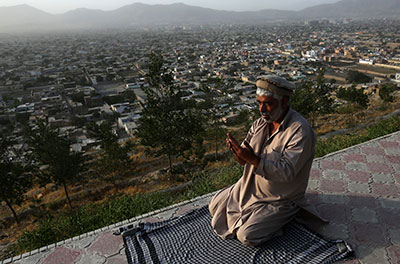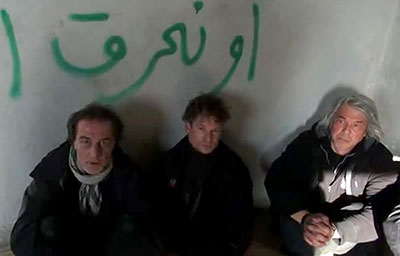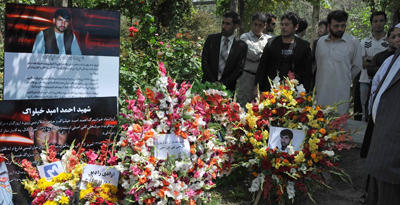Endless surprises for Al-Jazeera
Mhamed Krichen/CPJ Board memberThere seems to be no end to American surprises when it comes to Al-Jazeera. The latest was revealed by Der Spiegel, the German weekly news magazine, which reported the U.S. National Security Agency hacked into our internal communications system, according to documents provided by Edward Snowden, the former NSA security analyst.
Afghan journalists in good hands–their own
I’ve been making the rounds of journalists and organizations in Kabul for the last several days. As I mentioned in my last post, I’ve been asked to come up with a support plan for journalists after next year’s presidential elections, the drawdown of international troops, and an expected reduction in international aid.

For Afghan journalists, elections, not troops, are key
I’m in Kabul for several days, making the rounds of journalists’ organizations and media houses. My brief is to see what, if anything, can be done to protect journalists after the withdrawal of NATO troops during and after 2014. But “post-2014” has much different connotations for the Afghans with whom I’ve spoken or been in…
Hamid Karzai goes conservative on media
As if a faltering media industry and rising risks to endangered journalists as NATO reduces its forces in 2014 aren’t bad enough, add in a president pandering to religious conservatives in a pre-presidential election run-up. Reporting from Kabul, Reuters said Wednesday:

Getting ready for contingencies in Afghanistan
Considering the worst-case scenarios for post-2014 Afghanistan, international news agencies should start planning a range of assistance responses for locally hired journalists and media staff. By the end of 2014, NATO troops will have largely withdrawn and the Karzai government will make way for a new administration. If the situation becomes chaotic, Afghans working for…

Do news blackouts help journalists held captive?
At any given time over the past two years, as wars raged in Libya and then Syria, and as other conflicts ground on in South Asia and sub-Saharan Africa, a number of journalists have been held captive by a diverse array of forces, from militants and rebels to criminals and paramilitaries. And at any given…

Journalists still murdered where impunity reigns
Almost half of the 67 journalists killed worldwide in 2012 were targeted and murdered for their work, research by the Committee to Protect Journalists shows. The vast majority covered politics. Many also reported on war, human rights, and crime. In almost half of these cases, political groups are the suspected source of fire. There has…

Time to reassess U.S. military counterinsurgency tactics
One year ago, on July 28, 2011, Ahmad Omaid Khpalwak, 25, was killed by American troops during a brutal close-quarters battle with a Taliban suicide squad backed by gunmen. Khpalwak was one of 22 people killed in the hours-long siege on government buildings that included the governor’s office and police headquarters in Tarin Kot, capital…
Afghanistan’s draft media law slowed, but not stopped
For now, the Afghan government’s apparent attempt at railroading through a less-than-media-friendly new Mass Media Law without consultation seems to have been sidelined, though not derailed. On Sunday in Kabul, representatives of the Ministry of Information and Culture received recommendations from civil society workers and journalists, including some from the provinces, which were drawn up…